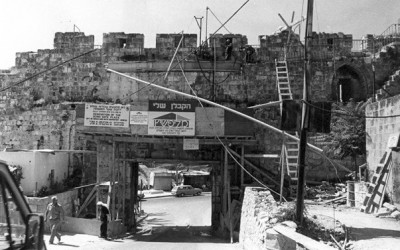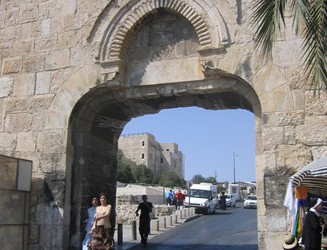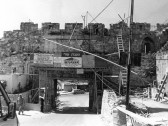About the project
The Dung Gate, also called the Gate of Silwan and the Mograbi Gate, is the gate into the Old City built in 1538-40 that leads directly to the Western Wall. The gate is first mentioned in the Book of Nehemiah, which describes the prophet’s survey of the ruined city in 445 BCE. That Dung Gate was south of today’s, and served as a dispatch point for the city’s garbage, hence its name. Until the end of Ottoman Rule, the gate was merely a small break in the wall for pedestrians, when a gatehouse was built outside the wall. In 1938, the British removed the gatehouse and discovered the decorations around the Turkish pedestrian gate. In 1952, King Hussein of Jordan increased the size of the gate to facilitate the passage of cars and buses, in the process installing a reinforced concrete girder under the decorative arch. The Jerusalem Foundation supported restoration of the gate in 1984. Due to the historical sensitivity of the site and its surroundings, extensive planning was undertaken (architects Shlomo Aronson and Arthur Kutcher considered 42 alternative designs). The final scheme placed the original small Ottoman arch over a wide new arch designed in a manner appropriate to the appearance of the wall.






